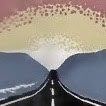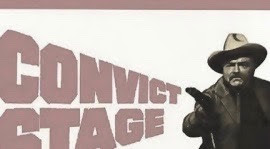Written by James M. Tate / 3/23/2019 / No comments / action , alan dean foster , eighties , george lucas , horror , interview , john carpenter , science-fiction , seventies , star trek , star wars , thriller
GREAT NOVELIZATIONS: AN INTERVIEW WITH ALAN DEAN FOSTER
 |
| Star Trek The Motion Picture Early Artwork for Vulcan Shuttle |
But one thing that fans of ALIEN, THE BLACK HOLE, THE THING, CLASH OF THE TITANS, THE LAST STARFIGHTER and other films did have were novelizations: books that covered the scripted story but also provided insight into back-story, character-development, and coolest of all, entire scenes/segments that didn’t make the film’s final cut i.e. deleted scenes that are brought to life. And before the novelizations began, he was the perfect candidate as ghostwriter for a young filmmaker named George Lucas, who had embarked on a risky science-fiction project titled STAR WARS, and the STAR TREK Log Books along with the screenplay for STAR TREK: THE MOTION PICTURE.
 |
| Original Cover of Star Wars: Not Mark Hamill |
My agent was contacted to see if I might be interested in novelizing this soon-to-be-released SF film called THE STAR WARS, being done by George Lucas. I knew George's work, of course, from both THX 1138 and AMERICAN GRAFITTI. I subsequently had a meeting with George's lawyer on Sunset Blvd. I believe something was said about someone close to the film having read my ICERIGGER and that they felt it was close in spirit to the upcoming picture.
Negotiations ensued, with my participation for two books being agreed upon. One of the conditions was that George's name be on the cover and that, if asked, I deny having done the book. I had no problem with this... it's George's story, and business is business. But it was difficult having to occasionally lie to friends. I don't think any of them hold it against me.
 |
| Did Foster inspire the jungle Dagobah? |
As I said, the contract was for me to do two books: the novelization of the film and an original sequel...
With the caveat that I could not use the character of Han Solo (because, as I recall, Harrison Ford had not yet come to terms to do any sequels), I was given a completely free rein to write whatever I wished... except that George asked if I could write the story so that it could possibly be filmed on a low budget.
He was always thinking ahead, and in this regard he felt that if the first film was only a modest success, he would still be able to do a sequel with existing props and such. That's why the film takes place on a fog-shrouded planet, underground, etc....eliminates the need for expensive backdrops (no cgi then, remember). When SW was the overwhelming hit that it was, he was free to pursue any visions he desired.
 |
| "Mork calling Orson..." |
ALIEN: A haunted house story, mostly atmosphere. It's a lot easier to show atmosphere than describe it, but I had to keep thinking up new ways to describe the character's sense of dread. More critically, Fox wouldn't let anyone not directly connected with the filming see a picture of the alien.
So I had to write the book without knowing what the alien looked like. Damn difficult. I was able to add a good deal about the space jockey ship, how it was found, and in particular I was able to novelize the scene that shows Ripley finding Dallas wrapped up in the alien cocoon, which is critical to understanding the alien's motivations. I wrote the book in three weeks, often at night looking over my shoulder.
 |
| Continuing the Alien adventure |
 |
| Well We LOVE This Movie |
The meteor rolling down the center of the ship like a giant flaming bowling ball almost made me give up in despair (velocity? momentum? oxygen?). I felt terrible for the Ellenshaws and especially Ellenshaw Sr. They did some beautiful matte work for the picture, but the story and science were beyond juvenile.
After I finished the book I made a list of 75 changes that I felt could be made to the picture in post-production to improve it and turned it in to my contact at Disney. Nothing was heard. Years later I ran into the same guy and said, "I guess no one at the studio ever saw my suggestions." "Oh no," he replied. "They had a meeting about it. There was a lot of anger expressed." I was hardly surprised. How dare some cheap-ass novelizer make suggestions about their big-budget extravaganza! See, in certain areas of the film business the only thing worse than being wrong about something is being right.
 |
| Clash of the Titans |
 |
| The Thing Secondary Cover |
THE THING: Most notably, the final scene differs from the one that was used in the film. And I was able to get even gorier than the picture. Another very underrated film and much truer to John W. Campbell's original story WHO GOES THERE? than the 1950's version.
DARK STAR: Guys sitting around in a spaceship talking about how bored they are. Hardest film novelization I've ever had to do. I had no choice but to explore their thoughts in detail... sometimes endless detail. There was nowhere else to go. The cheap beach ball alien posed a problem, xenobiology-wise, until I realized I couldn't describe it as anything other than what it was. So I just called it the beachball... and lo and behold, it worked.
 |
| The Last Starfighter |
 |
| Krull Foreign edition |
It's something that's always bothered me about a lot of SF-related Japanese anime. KRULL lost me when the bad guys stop sword-fighting, turn their weapons around, and shoot death rays from the other end. Why not do that in the first place? Ask the screenwriters and the producers. If not for the crystal spider sequence the film's pretty much a total loss as far as I'm concerned. As usual, I tried my best to rationalize the lethally incongruous portions of the story.
 |
| Alan Dean's stab at Western |
STAR MAN: Lovely film. Great performance by Jeff Bridges. Excellent example of how to make a good SF film without exploding spaceships and laser battles but still preserve a real sense of wonder and otherworldliness. In the film, due to budget constraints among other things, we mostly see the alien in its human form. I was able in the book to take a deeper look at his alien-ness.
 |
| Star Trek Log Book Enterprise cover |
Knowing that I knew my way around a screen, she asked if I could novelize the TV scripts. I agreed. But when I received them, each twenty minutes in actual length, I told her there was no way I could get a book out of each short script. I suggested using three scripts per book and tying them together as best I could. We did this for the first six books. She then called me and explained that the books were selling so well that I had to get a book out of each of the remaining four scripts...
I struggled with the idea, but eventually decided to use one script as the basis for the first third of each book and then write original material to fill it out. So the last four books contain mostly original material. Fortunately, I had saved what I felt to be the best scripts for the last, including two by actual SF writers, Larry Niven and David Gerrold… I remember wondering if they would cut the scene I added in one book where a love-struck (or actually lust-struck) ensign chases Uhura around the tree at an on-board Christmas party. They didn't…
 |
| The scene with Luke Skywalker and Biggs Darklighter that's in the book |
Both. The cocoon scene in ALIEN and the scene STAR WARS where Biggs Darklighter returns to Tatooine to announce that he's going to join the Rebellion are both examples of material that was filmed. The first was put back into later cuts. The Darklighter scene was not.
I once asked George why he cut it. He explained that at that point in the story, the character of Luke has not yet been established and that Biggs overpowers him in that sequence. So he cut it. Makes perfect directorial sense.
What are you provided with to prepare for writing a novelization? I don't have any time to "get prepared". The publisher always needs the finished manuscript yesterday. I work (obviously) directly from the most recent script available. If I'm lucky I'm given access to production photos and often pre-production art. TERMINATOR SALVATION was especially generous in this regard. I've already discussed ALIEN.
 |
| Star Trek Log Cartoon Cover |
 |
| ADF even made lame characters work |
How long had you been writing before getting your first novel published in 1972? I'd sold a couple of short stories, one to August Derleth and another to John Campbell, before Betty Ballantine bought my first novel (THE TAR-AIYM KRANG). I'd been writing occasionally and submitting stories for a couple of years. Betty's acceptance of the novel was on its third submission. The first was to Campbell, who liked it a lot, thought it saleable, but was bought up on serials for Analog for three years. Doubleday sent me a typed rejection missive. Then Betty bought it.
 |
| Star Trek Log Book Enterprise cover |
 |
| Neat Pulpy Cover |
My short stories, which are partly available in seven collections. Non-genre novels like INTO THE OUT OF, MAORI, and PRIMAL SHADOWS. Among the SF and fantasy, it's hard to choose. I'll leave that to the readers.
How does your original work end up influencing the novelizations (or vice versa)? I put the same effort into the novelizations as into my originals. I think the readers can detect that. I regard each novelization as a collaboration between writers, and I do my best to maintain the style and feel of the original writers' prose.
 |
| ADF's job was to make the Trek cartoon read like the OS |
I have a new fantasy trilogy being read now that's set entirely underwater, OSHANURTH: The first book, BLUE MAGIC, is completed. And there's a young adult fantasy novel set in Pennsylvania and Manhattan, THE DEAVYS. Right now I'm writing STAR TREK: REFUGEES, which will be the first sequel novel to the recent Star Trek film. And I've just done an original story for Wizards of the Coast set in the Dungeons and Dragons universe.
 |
| Alan Dean Foster's Underrated Star Trek The Motion Picture |
Roddenberry gave me a two-page outline titled ROBOT'S RETURN and asked if I could expand it. I developed a long treatment I called IN THY IMAGE.
This was to be the opening episode of the new, revived network series.
They then decided they wanted to open with a two-hour movie for TV. I again expanded and revised the treatment, which subsequently became the basis for the film. 97% of that treatment was mine... Everything except the idea of a terrestrial probe returning in altered form to seek its origin.
 |
| The alternate and/or teaser poster for Star Trek The Motion Picture |
The first five minutes of the film is exactly as it appeared in my treatment. They then took off and did numerous things differently. It was also my idea to promote Kirk to admiral.
And what did you think of the film itself?
Fine film, more time and money would've made it better. Not a shoot 'em up, which is always easier to do. And an utterly non-biological adversary. An attempt to do real SF.
In the STAR WARS novelization that you ghostwrote for George Lucas, when Obi Wan is talking to Luke after first meeting him on Tatooine, he mentions a duck... And Luke asks, "What's a Duck?" Where did this originate?
Duck was my input. The line is from a Marx brothers movie where Groucho asks Chico, "Why a duck?" They're actually talking about Florida real estate, and…viaducts. I am sure it is the only reference in the entire Star Wars canon to a Marx brothers movie.
 |
| Alan Dean Foster's Star Trek The Motion Picture Spock Shuttle is our favorite Trek Spaceship |
 |
| The Enterprise goes into colorful 2001 inspired hyperspace in STAR TREK THE MOTION PICTURE |
 |
| Cult Film Freak Full Interview with author Alan Dean Foster |
Subscribe to:
Post Comments (Atom)
All Time Popular
-
Robyn Hilton enters into an eclectic exploitation comedy career in Wonder Women circa 1973 As mentioned a few posts ago, ROBYN HILTON, b...
-
year: 1978 cast: Allen Garfield, Leif Garrett, Kathleen Lloyd, Tony Alva, Pam Kenneally rating: ***1/2 Although promoted as a Leif Garret...
-
Kari Michaelsen in Saturday the 14th year: 1982 In LOVE AT FIRST BITE, a popular comedy that took the vampire genre by satire, Richard ...
-
Cornelia Sharpe in BUSTING Year: 1974 Rating: **** Starring Elliott Gould and Robert Blake as determined vice cops BUSTING hookers, makin...
-
Mary-Louise Weller in NATIONAL LAMPOON'S ANIMAL HOUSE ANIMAL HOUSE, directed by John Landis and produced by Ivan Reitman, stars John Be...
-
Kerri Green and John Candy in SUMMER RENTAL Year: 1985 John Candy, in his first leading role, plays a burnt-out air traffic controller ...
-
Robyn Hilton in Video Vixens the same year as Blazing Saddles: 1974 The Anthology of Comedic Parodies, already done in several Woody All...
-
CADDDYSHACK is best known for the iconic leading actors: Rodney Dangerfield, Chevy Chase, Ted Knight, and Bill Murray, but originally the ...
-
Robyn Hilton on STARSKY AND HUTCH Model/Actress ROBYN HILTON played Mel Brook's secretary in BLAZING SADDLES and turns up in an epis...
-
Elizabeth James and Tom Laughlin on equal ground YEAR: 1967 THE BORN LOSERS wasn't supposed to happen but thank God it did since BIL...
Featured Post
CORNEL WILDE INVESTIGATING DON SIEGEL'S 'EDGE OF ETERNITY'
Year: 1959 Rating: *** Don Siegel's EDGE OF ETERNITY is a Technicolor Neo Noir, a B-Movie Potboiler and a Novelty Film using actual foot...




























































No comments:
Post a Comment
Note: Only a member of this blog may post a comment.